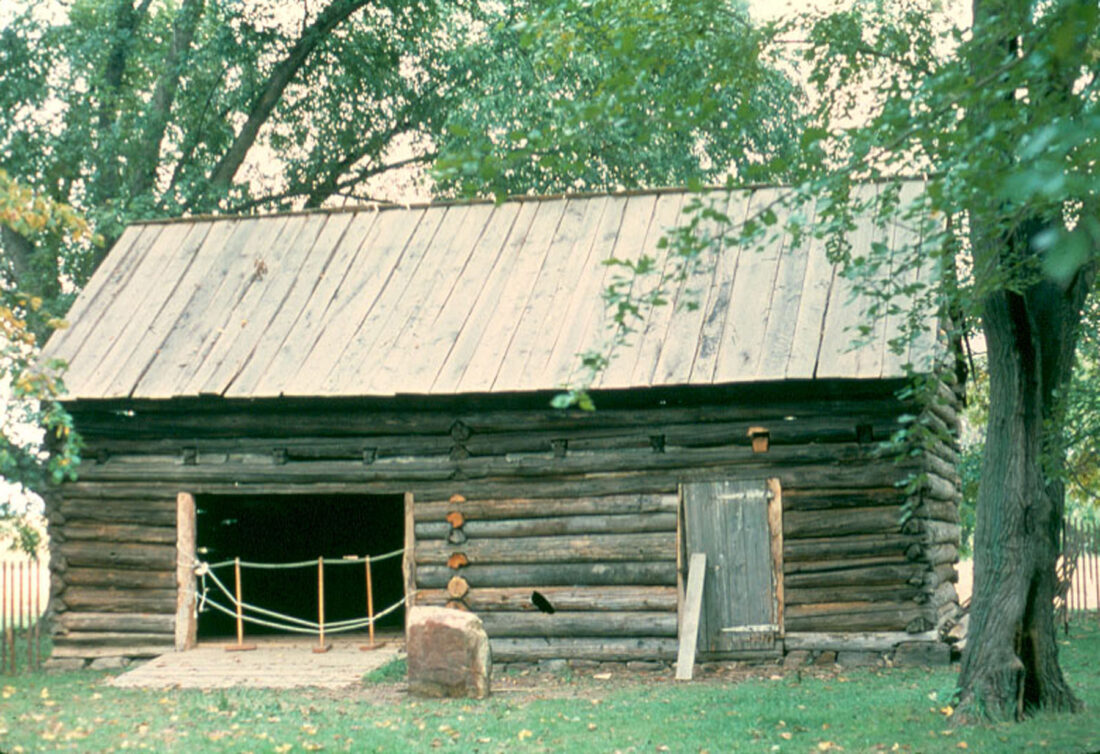Municipality: Greenwich
Category: Farm Structure/Barn
In the rear yard of the Cumberland County Historical Society’s headquarters in Greenwich, New Jersey stands what is most likely the sole surviving 17th century Swedish granary in America. Built sometime in the mid seventeenth century, it was moved to its current location in 1975 from its original construction site about four miles east of Greenwich in the Dutch Neck area of Hopewell Township.
The construction of the Swedish Granary in the middle of the 17th century occurred at a time when the Realm of Sweden has reached its greatest territorial extent and was one of the great powers of Europe. The Realm of Sweden referred to the territory over which the Queen ruled, which at that time included present-day Finland, Estonia and parts of Russia, Poland, Germany, and Latvia. In an effort to bypass French and English traders of the day, Sweden chartered the New Sweden Company and in 1637 the first expedition was launched to the New World.
Passing what is today Cape May and Cape Henlopen in Delaware the first ships of the New Sweden Company landed on the Delaware side of the Delaware Bay in 1638. Knowing the entire bay area had been claimed by the Dutch, the first task of the new settlers was to build a fort on the present site of the city of Wilmington, which they named Fort Christina and Queen Christina of Sweden.
Firmly established, the New Sweden Company brought over 600 settlers up the Delaware Bay and expanded from Fort Christina, building a fort named Nya Elfborg on the east side of the river near present day Salem, New Jersey and Fort Nya Gothenborg near present-day Philadelphia. Half of these original settlers were Forest Finns, a group of woodsmen brought into Sweden to clear cut forested land. When these Forest Finns ran out of work in Sweden they were brought to the New World and their skill with log construction spreads throughout the colonies.
While traces of the early Swedish colonies in southern New Jersey remain in town names like Swedesboro, very few buildings remain standing and the Granary in Greenwich is the only known of its type to still be in existence. Built of Atlantic White Cedar, a wood that is light, not very strong, but extremely decay resistant, the Granary consists of a two-part structure with notched and crossed corners with the ends of the logs slightly projecting. The roof has a steep slope and is made of handsplit cedar shingles. No openings are cut into the logs on three sides and a log interior wall divides the building into two spaces with stairs and a loft space above one. Fifty-nine logs remain from the original structure while the roof and floors dates to a 1976 restoration based on Swedish construction methods of the period.
The Granary’s original purpose was to store threshed grain or animal feed and was a precursor to today’s silos and grain elevators. It stands today both as a reminder of the region’s long and complex history and as a testament to the farming traditions and agricultural bounty which remains to this day throughout Cumberland County. The Granary is undergoing study for its continued preservation and is open on special occasions.

